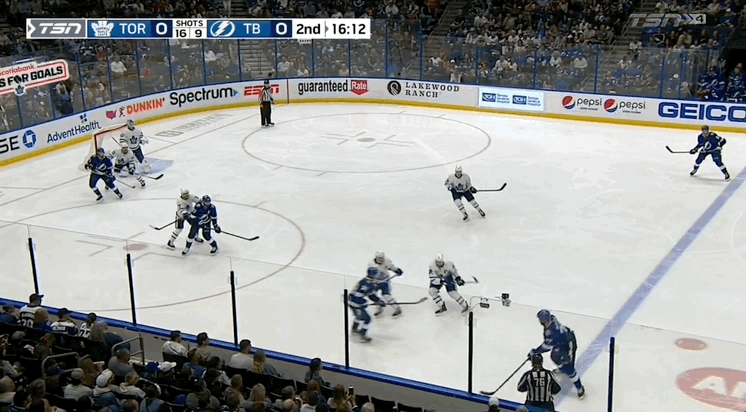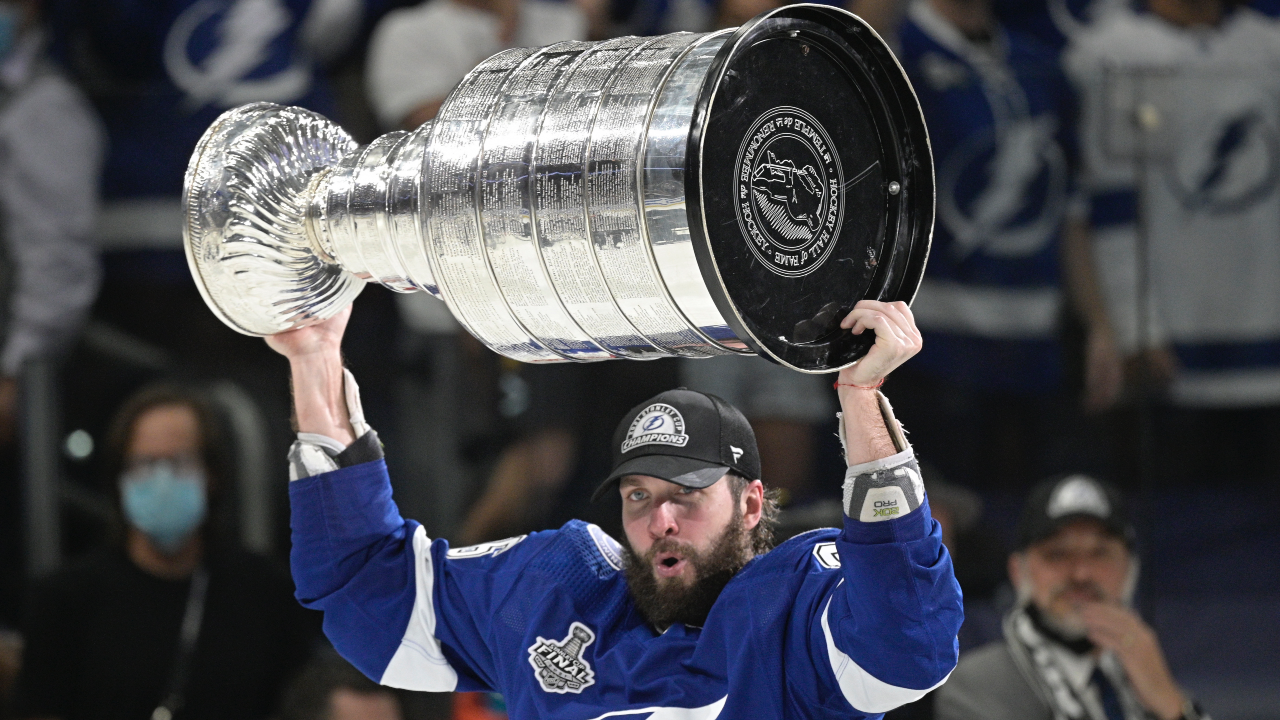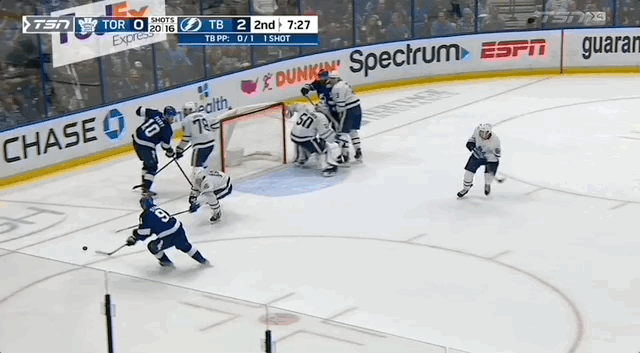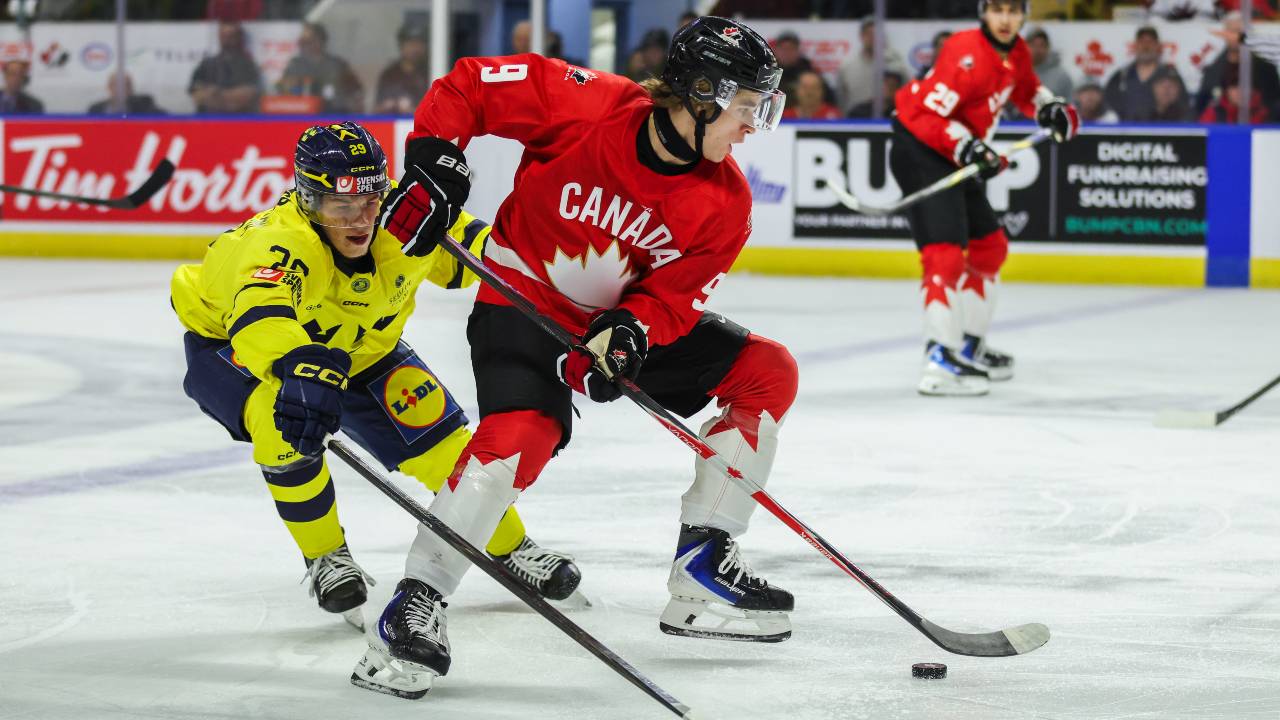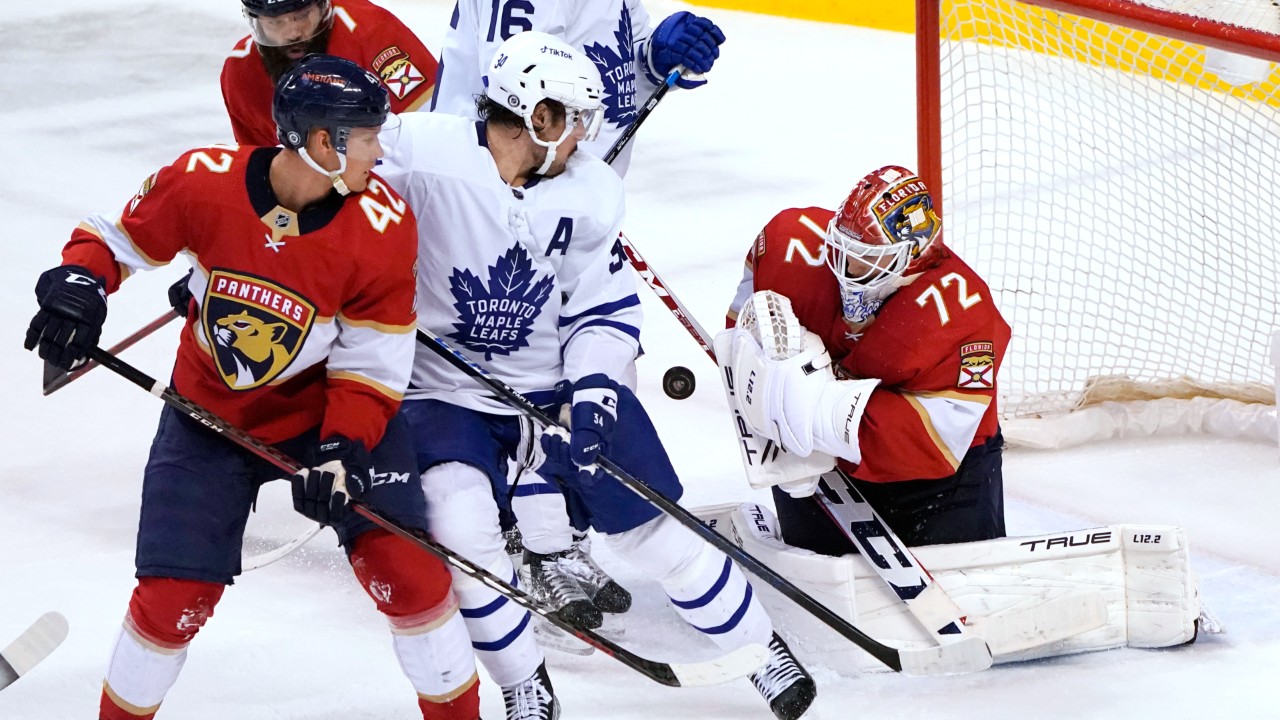
If the playoffs started today, the Toronto Maple Leafs would take on the Tampa Bay Lightning in a Round 1 matchup. If they make it through that series, it’s likely they’d face off against the Florida Panthers next.
Lucky for Toronto, they got a preview against both teams over the last few games to gauge how they stack up. Unlucky for the Maple Leafs, they walked away with two losses.
Let’s take a deeper look.
Maple Leafs vs. Lightning
The Maple Leafs’ Thursday night matchup was tough by every stretch of the word. The even-strength battle was tilted in Tampa Bay’s direction. The Lightning generated more shots (53-41 attempts) and slot attempts (25-14); the quality of their shots equated to a 3.55 expected goal total that exceeded Toronto’s generation of just 1.33. While the home team had a slight edge in rush chances, where they really stifled their opponent was off the cycle, holding Toronto to just two quality attempts when creating 13 for.
And then came the special teams battle, which Tampa Bay won handily.
At no point in the game were the Leafs ahead in the xG battle — the Lightning absolutely ran away with it, especially in the second half of the game. The finally tally was 5.36 – 2.15 in all situations.
To Toronto’s credit, they were without their MVP, Auston Matthews. The centre was a force in the teams’ last matchup earlier in April that the Maple Leafs won 6-2. But there are still takeaways for this single game.
One key takeaway plays right off that. It’s ensuring this isn’t a one line, or one player team once the post-season kicks off. Matthews is going to face tough matchups, no matter how the deck is stacked. He’ll likely see a lot of Victor Hedman in his Norris-calibre season. Anthony Cirelli’s outstanding defensive play is going to trouble him. Or he could be in power-versus-power matchups with Brayden Point.
If Tampa figures out a way to shut down the centre’s elite offensive attack, they’re going to need supplementary scoring to get by. While collectively the team has been a strong offensive generator all season, their finishing has fallen below expected at times.
Another is seeing how teams bounce back from tough meetings. The two games the Lightning and Maple Leafs played this month alone can represent the ebbs and flows of a series. Just because a team absolutely crushes the other in one meeting doesn’t mean it’s game, set, match. That was true when the Lightning lost, and now the Maple Leafs.
It’s all about how teams respond in the next game. The back-to-back champion Bolts know that. And that’s the test for Toronto to get past the opening round. The challenge is doing that against a lineup with elite skill throughout.
The other takeaway is the need to study the Lightning’s dynamic power play. On Thursday, the Leafs allowed three goals on the advantage.
Generally, Toronto’s a strong team on the penalty kill and isn’t one-dimensional. But they’ll have their work cut out for them to limit the danger. Areas to improve after this meeting include closing passing lanes to the quality areas, clearing screens, and recovering more rebounds to limit second-chance efforts. Penalty killers will have to learn those tendencies and read plays better to push play out of the offensive zone; that’s the best way to stop this team from scoring while up a skater.
Maple Leafs vs. Panthers
Toronto was the better team below the surface, and they managed fairly well with their lead, despite being without Jake Muzzin and losing Michael Bunting mid-game. The positive takeaways at even strength include the Maple Leafs ability to exceed the Panthers’ scoring chances for and odd-man rushes. Something they can work on to better contain their opponent is closing off passing lanes to suppress puck movement to the slot.
But the focus may once again turn to how the Panthers managed to come back. In two straight meetings with Florida, Toronto has blown a lead and lost in overtime. Lucky for them, it wasn’t nearly as dramatic as last time — a 5-1 lead that turned into a 7-6 overtime loss.
When teams trail, they tend to try to push the pace offensively, even if it makes making a riskier play. When teams lead, on the other hand, they can go into a shell, prioritizing defence. That one-dimensional strategy can burn a team, because if they fall short in their own zone, or their goaltender does, scores can quickly even.
The Maple Leafs are one of the better teams at playing with a lead. They generate the third best rate of expected goals for at 5-on-5, second only to Florida. Their finishing slides down to fifth, with Minnesota, Colorado, and Tampa Bay moving ahead of them, but it’s still above expected. That explains why in some games they can run up the score better than most.
On the other end of the ice, they allow the 10th lowest rate of expected goals against (2.43 per 60) at 5-on-5. So, when ahead in games, they tend to generate more than they allow. But as well as they may try to play in front of the blue paint, their goaltenders do allow more than expected; their actual goals against rate while leading is 20th in the league.
Now, focus on their opponent.
Florida is one of the best come-from-behind teams. Their expected goal generation (3.18 per 60) ranks third in the league, with Carolina and Toronto ahead. The Panthers’ finishing ability pushes them up to first in actual goals for (3.52 per 60).
Now, maybe there is a question of sustainability. Could this style of play burn them over the next couple of weeks, when most teams tend to try to tighten up defensively and take fewer risks? It’s entirely possible. But given the strength of their offence and how they’ve managed specifically in this matchup, that can’t be the line of thinking.
The Panthers happen to be fairly strong, in terms of expected goal limitation, even when trailing in games. For them, sometimes, the best defence is just an elite offence.
So, the lesson to learn is the Maple Leafs can’t just try to clamp down and limit their opponents’ offensive creation given just how skilled they are. In the second period — a frame in which Toronto entered with a 2-0 lead — they generated just .15 expected goals for at even strength to the Panthers’ 1.09. That may have contributed to the fact that these teams went to the locker room with the score knotted 2-2.
Toronto did pick up the pace in the third and obviously won’t have to worry about 3-on-3 play in the post-season. But they still have to try to build on this loss seeing as they may be meeting this opponent quite a few more times. So, the takeaway may be that offence as to be the priority to give the Panthers a steeper hill to climb instead of hoping they can shut them down without building on a lead.
Data via Sportlogiq.


